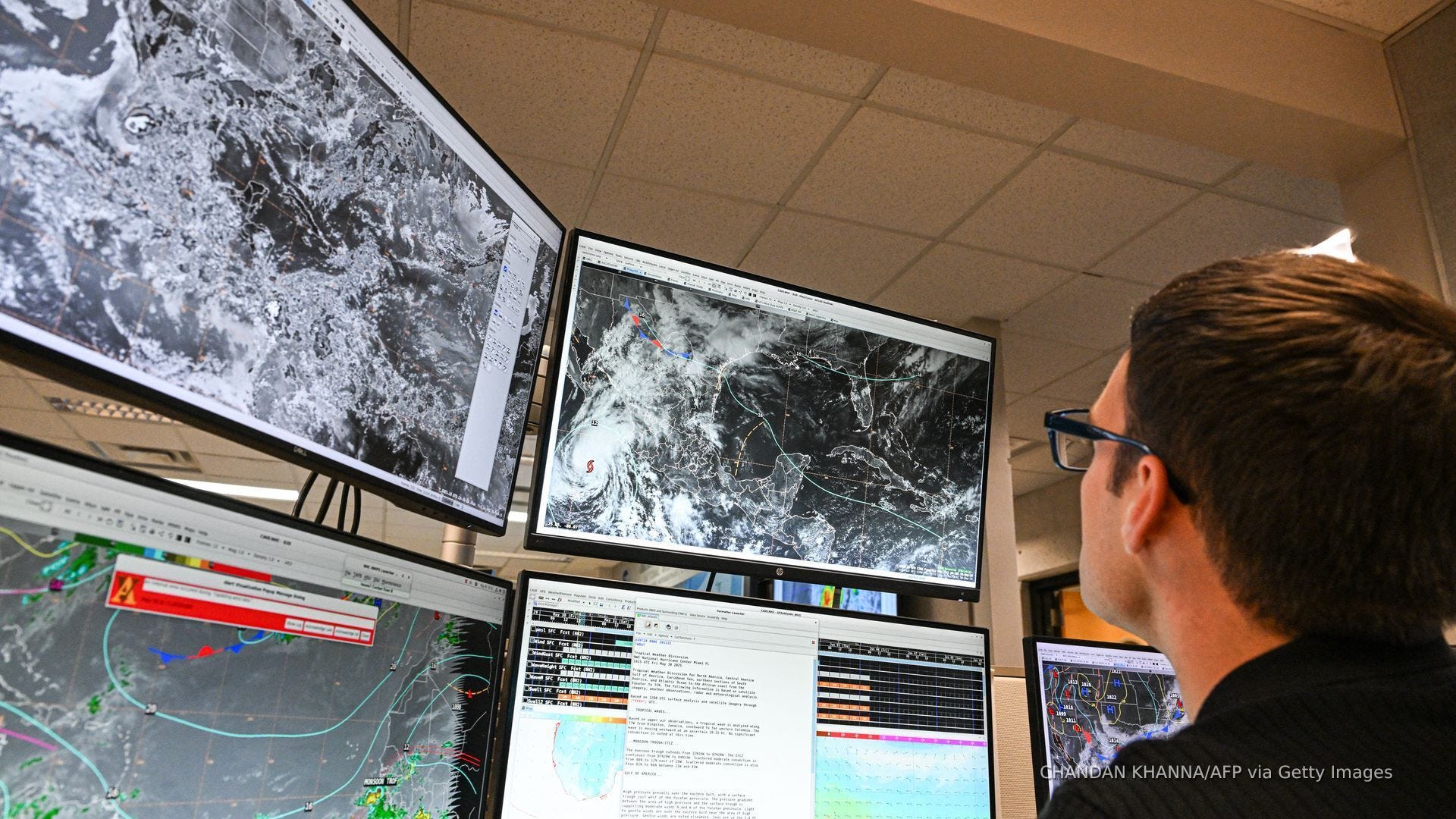Feds take steps to fill vacancies at the National Weather Service
Weather Service will hire 450 people, but experts say it won't help fill critical vacancies during current hurricane and wildfire season.

The National Weather Service has taken steps to begin filling some of the more than 550 positions left vacant by federal cutbacks and early retirements since Inauguration Day.
Earlier in the summer, the agency received an emergency hiring exemption to fill 126 of its vacant positions and has begun to post those jobs on usajobs.gov. But in an all-hands meeting on Aug. 4, weather service employees learned the agency has since received permission to hire a total of 450 people by September 2026, said two long-time weather service veterans who retired earlier this year.
The mass exodus of workers this winter and spring, as the Trump administration aimed to shrink the federal budget and bureaucracy, prompted widespread concern across the weather service staff, many members of Congress and the broader weather forecasting community.
Vacancy rates were as high as 40% in some weather service offices, Paste BN previously reported. Several weather service forecast offices began closing overnight because they could no longer staff the typical 24/7 operations and weather balloon launches to gather critical data were interrupted.
While the new hires are "good news," it doesn't mean clear sailing for the beleaguered agency in the months ahead, given the complicated federal hiring process and the need to train new employees, said Brian LaMarre, who retired earlier this year as meteorologist-in-charge of the weather service office in Ruskin/Tampa, Florida, after more than 30 years with the agency.
"That still doesn’t backfill to what the agency was on January 1, but it’s a good step," LaMarre said, noting it will take months to fill posts now vacant and those created by promotions.
In an email to Paste BN, the agency declined to comment, confirm or deny the information that emerged from its employee meeting Aug. 4.
In that meeting, employees were told the meteorologist, hydrologist and electronics technician positions have all been exempted from an ongoing federal hiring freeze, said Alan Gerard, another 30-plus year veteran meteorologist who retired earlier this year. Gerard now writes the "Balanced Weather" blog on Substack. In July, President Donald Trump extended that freeze through Oct. 15.
The agency also has been given direct hiring authority, a step that typically allows federal agencies slightly more flexibility with the federal hiring rules, Gerard said.
Hiring new people to fill critical positions is "good news, but it's not going to help in any concrete way for many months," he said. Considering the time it takes to hire and train new people, these steps "aren't going to help for this hurricane and wildfire season."
The weather service isn't just meteorologists
So far, the first positions to be advertised are for electronics technician openings, which were among the 126 "critical vacancies."
That's especially good news, LaMarre said. The importance of the technicians was overlooked in the initial flurry of reports about the terminations of probationary employees and the consternation over the massive departures at the weather service, he said.
The technicians are responsible for maintaining and repairing the all-important radar systems and other equipment used to make forecasts, he said, not only at the weather service forecast offices but also at airports where the weather service has agreements with the Federal Aviation Administration to maintain radar equipment.
"These are critical operations pieces," he said. "The publicity is often on the meteorologists, but the technicians are the foundation of what's done."
LaMarre said it's also good news that hydrologists will be among those hired. It could allow the agency to follow through on a plan to place hydrologists in state emergency operations centers, to assist in forecasting flood events. They'd already done that in Virigina and were about to do it in Texas, he said.
Dinah Voyles Pulver, a national correspondent for Paste BN, has covered climate change, weather and other news for decades. Reach her at dpulver@usatoday.com or @dinahvp on Bluesky or X or dinahvp.77 on Signal.